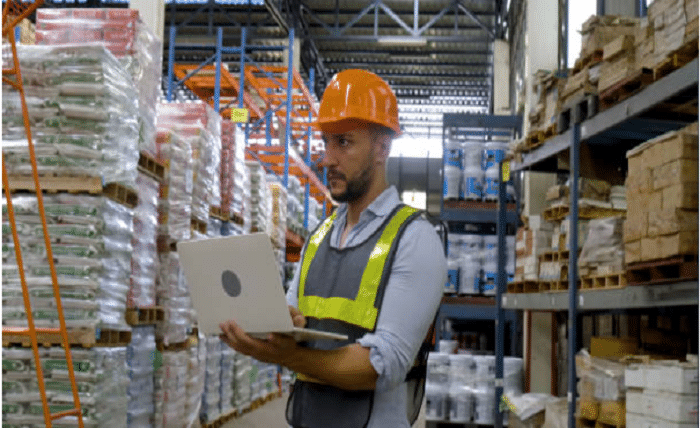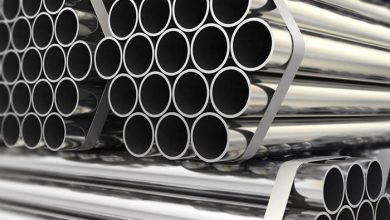
In the world of global commerce, commodities serve as the backbone of international trade. From raw materials to manufactured goods, understanding the types of commodity in shipping that travel across borders is crucial for businesses, shippers, and logistics professionals. Whether you’re a seasoned importer, a novice exporter, or someone curious about the complex mechanisms of shipping, recognizing the vast array of commodities involved in the shipping process can be the key to a successful and smooth operation.
But, what exactly are these commodities? How do they impact the shipping industry, and what considerations must be made when transporting them? Let’s delve into the various categories of commodities in shipping and explore the key elements that make each one unique.
Raw Materials: The Foundation of Global Trade
At the heart of the global supply chain lies a category of commodities that forms the building blocks for countless industries—raw materials. These are the unprocessed materials extracted directly from nature and used in the production of finished goods. When it comes to shipping raw materials, factors such as volume, weight, and the potential for environmental impact must all be considered.
Raw materials include minerals, metals, timber, oil, natural gas, and agricultural products like cotton, grains, and coffee beans. Each of these commodities requires special attention during shipping. For example, oil and gas must be transported using specialized tankers to ensure safety and minimize the risk of spills. Similarly, metals like iron ore and copper are often shipped in bulk carriers designed to accommodate massive quantities and prevent damage during transit.
Transporting these raw materials involves navigating an intricate web of regulations, environmental policies, and international treaties. Whether it’s a bulk vessel laden with coal headed to a power plant or a container of agricultural products bound for a processing plant, shipping raw materials is often the first step in a complex production journey.
Manufactured Goods: The Workhorse of Global Supply Chains
Manufactured goods form another key pillar in the shipping world. Unlike raw materials, these commodities have undergone some form of processing or assembly and are now ready for distribution to markets around the globe. The manufacturing process may involve turning raw materials into finished products or assembling various components into complex machines. As a result, shipping manufactured goods requires a different set of logistics considerations.
Common examples of manufactured goods shipped worldwide include electronics, clothing, machinery, vehicles, and furniture. These goods can vary significantly in size, weight, and fragility, meaning that different types of packaging, containers, and handling methods are required.
For instance, a shipment of smartphones will be packed in specially designed boxes to protect them from shock and moisture, whereas shipping heavy machinery might require flat-rack containers or breakbulk shipping for large or irregularly shaped items. The proper handling of manufactured goods often requires specialized equipment and packaging, such as iso container leveling legs, to ensure that products arrive intact and in working condition.
Shipping manufactured goods also involves a robust system of documentation, including product specifications, invoices, and dtc shipping labels, to ensure compliance with both local and international trade regulations. The complexities of tariffs, customs duties, and import/export restrictions are just a few of the hurdles that shipping companies must overcome when transporting these goods.
Perishable Commodities: Freshness is Key
Another crucial category of commodities in shipping is perishable goods. These items are typically time-sensitive and require special care to ensure that they reach their destination in optimal condition. Perishable commodities encompass a wide range of products, from fresh fruits and vegetables to seafood, dairy products, and even pharmaceuticals that require refrigeration.
The shipping of perishable goods requires refrigerated containers, also known as “reefers,” that maintain a consistent temperature to prevent spoilage or contamination. Depending on the product, the shipping process may also require the use of specific humidity levels, airflow control, or even the presence of certain gases to slow down the ripening process for fruits and vegetables.
For example, shipping seafood often involves quick turnarounds, as fish and shellfish can deteriorate rapidly without the proper conditions. Similarly, temperature-sensitive medications like vaccines need to be shipped in containers that maintain a steady, regulated environment throughout the entire journey, from warehouse to final destination.
The pressure of time is a key factor in shipping perishables. Every minute counts, and delays can result in significant financial losses or health risks. Shipping companies specializing in perishable commodities must have advanced tracking systems and a deep understanding of cold chain logistics to ensure safe, timely deliveries.
Hazardous Commodities: Safety and Compliance at the Forefront
Hazardous materials are another category of commodities that require meticulous care and specialized shipping methods. These products, which include chemicals, explosives, radioactive materials, and other dangerous goods, are subject to strict regulations to protect the environment, public health, and safety.
Shipping hazardous commodities involves extensive documentation, specialized packaging, and compliance with global transportation laws such as the International Maritime Dangerous Goods (IMDG) Code. The packaging must prevent leaks or spills, while labels and placards need to clearly communicate the risks associated with the cargo. In many cases, carriers must be specially trained to handle these goods, as certain commodities pose risks that go beyond typical cargo, such as toxic exposure or environmental damage in case of a spill.
Transporting hazardous materials also requires attention to the mode of transport. While some hazardous goods can be safely transported via truck or rail, others may only be shipped by air or sea, depending on their nature and the regulations governing their transport. Given the high stakes, businesses shipping hazardous goods must work with experienced couriers who understand both the technical and regulatory aspects of their cargo.
Consumer Goods: Everyday Products in Demand
When most people think about shipping, they likely think about consumer goods—the everyday products that we use and consume. These can include everything from food and household products to electronics, toys, and cosmetics. Unlike the raw materials and manufactured goods previously discussed, consumer goods are typically ready for sale when they leave the production facility, and their journey to the marketplace is a key part of the distribution process.
Shipping consumer goods involves a combination of regular and specialized containers, depending on the product type. Items such as electronics, clothing, and toys are often shipped in standard shipping containers, while more delicate items like glassware or high-end fashion may require custom packaging to prevent damage.
One of the key factors in shipping consumer goods is understanding the demand cycles. Retailers and suppliers rely on accurate forecasting and timely delivery to ensure that shelves are stocked with the latest products. As a result, efficient inventory management and strategic shipping routes are critical to maintaining a steady flow of goods to consumers.

Conclusion: A World of Commodities, Each with Its Own Shipping Demands
The vast world of shipping commodities is rich in diversity and complexity. From raw materials fueling the manufacturing process to finished products reaching consumers’ hands, the types of goods being transported across the globe are as varied as the industries they serve. Each category, whether it’s perishables, hazardous materials, or consumer goods, comes with its own set of challenges, requirements, and regulations.
For businesses and individuals alike, understanding the intricacies of shipping commodities is essential for ensuring smooth and efficient operations. Choosing the right courier service that understands the nuances of various types of cargo can make all the difference in navigating the world of international shipping with confidence. Whether you’re sending a package across town or managing a global supply chain, having the right expertise and resources at your disposal is the first step toward success.




